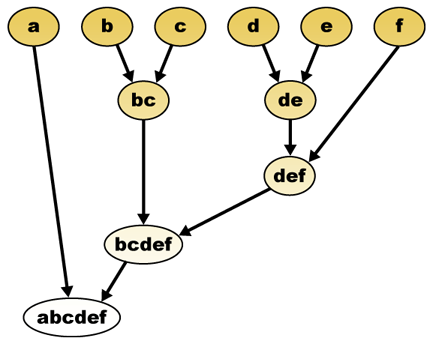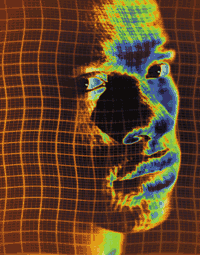.: Click here to download :.
Advances in data collection and storage capabilities during the past
decades have led to an information overload in most sciences.
Researchers working in domains as diverse as engineering, astronomy,
biology, remote sensing, economics, and consumer transactions, face
larger and larger observations and simulations on a daily basis. Such
datasets, in contrast with smaller, more traditional datasets that
have been studied extensively in the past, present new challenges in
data analysis. Traditional statistical methods break down partly
because of the increase in the number of observations, but mostly
because of the increase in the number of variables associated with
each observation. The dimension of the data is the number of variables
that are measured on each observation. High-dimensional datasets
present many mathematical challenges as well as some opportunities,
and are bound to give rise to new theoretical developments. One of the
problems with high-dimensional datasets is that, in many cases, not
all the measured variables are "important" for understanding the
underlying phenomena of interest. While certain computationally
expensive novel methods can construct predictive models with high
accuracy from high-dimensional data, it is still of interest in many
applications to reduce the dimension of the original data prior to any
modeling of the data. In mathematical terms, the problem can be stated
as follows: given the random variable p-dimensional x = (x1,..., xp),
find a lower dimensional representation of it, s = (s1,..., sk) with
k<=p, that captures the content in the original data, according to
some criterion. The components of s are sometimes called the hidden
components. Different fields use different names for the the term
"variable" is mostly used in statistics, while "feature" and
"attribute" are alternatives commonly used in the computer science and
machine learning literature. We have developed an algorithm for face
recognition based on Hierachical Dimensionality Reduction: we show
that the proposed method is an efficient way of representing face
patterns as well as reducing dimension of multidimensional feature.
Index Terms: Matlab, source, code, face, recognition, matching, hierarchical, dimensionality, dimensionality, reduction.
 |
Figure 1. Hierarchical clustering diagram |
||||||||||||||
|
A simple and effective source code for Face Recognition Based on Hierarchical Dimensionality Reduction. |
|||||||||||||||
Demo code (protected
P-files) available for performance evaluation. Matlab Image Processing Toolbox is required.
|
|||||||||||||||
|
Release |
Date |
Major features |
|||||||||||||
|
1.0 |
2009.03.28 |
|
|||||||||||||
We recommend to check the secure connection to PayPal, in order to avoid any fraud. This donation has to be considered an encouragement to improve the code itself. |
|||||||||||||||
Face Recognition Based on Hierarchical Dimensionality Reduction. Click here for
your donation. In order to obtain the source code you
have to pay a little sum of money: 150 EUROS (less
than 210 U.S. Dollars). |
|||||||||||||||
Once you have done this, please email us luigi.rosa@tiscali.it As soon as possible (in a few days) you will receive our new release of Face Recognition Based on Hierarchical Dimensionality Reduction. Alternatively, you can bestow using our banking coordinates:
|
|||||||||||||||
The authors have no relationship or partnership
with The Mathworks. All the code provided is written in Matlab
language (M-files and/or M-functions), with no dll or other
protected parts of code (P-files or executables). The code was
developed with Matlab 2006a. Matlab Image Processing Toolbox is required.
The code provided has to be considered "as is" and it is without any kind of warranty. The
authors deny any kind of warranty concerning the code as well
as any kind of responsibility for problems and damages which may
be caused by the use of the code itself including all parts of
the source code.

